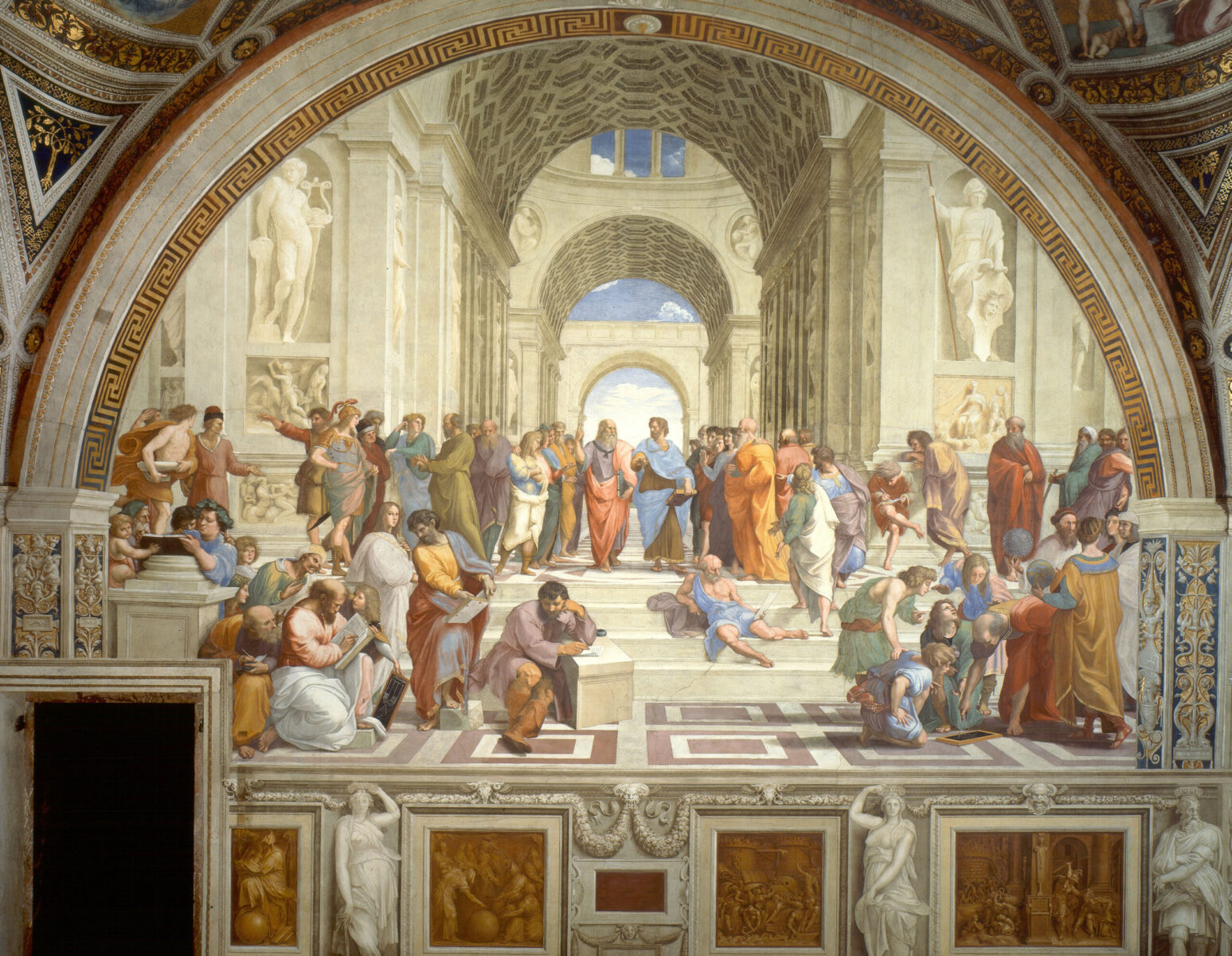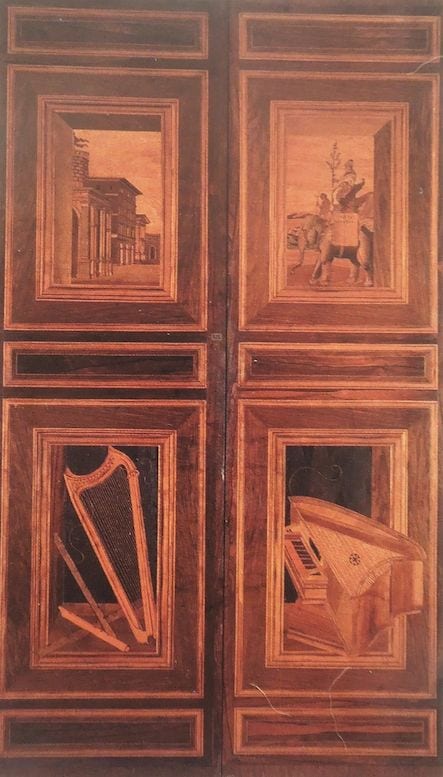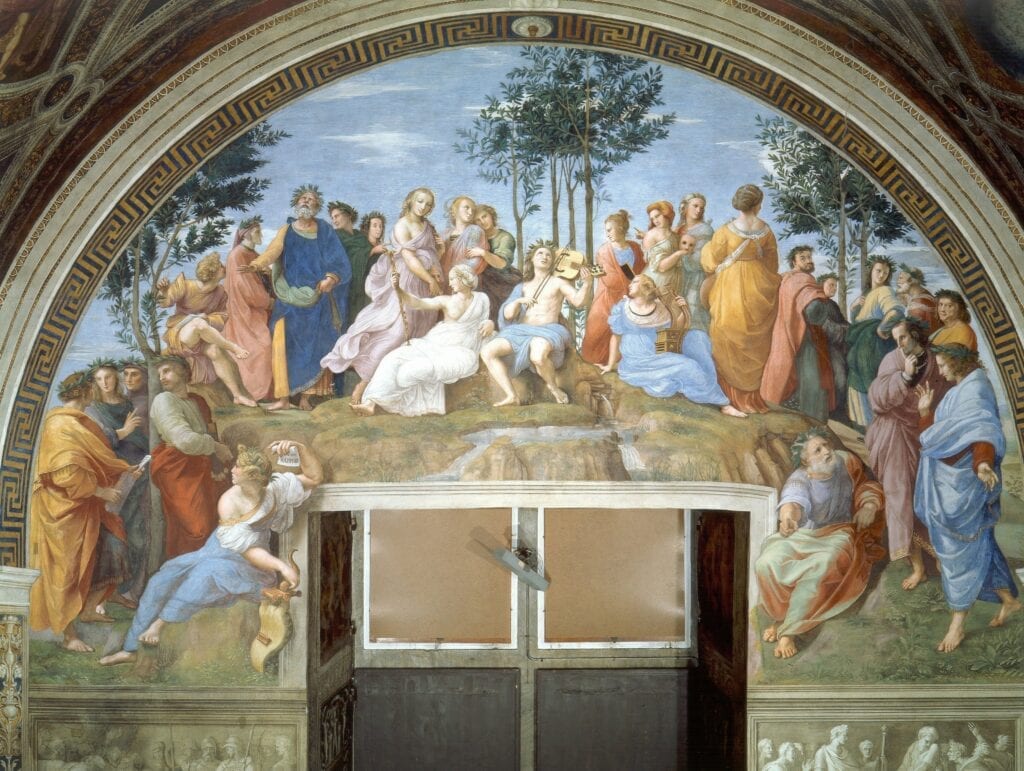
Quarantine Talks Episode III: Stanza Della Segnatura (Room of Signature)
In this Episode, Mario Bernardi explains the symbology and the meaning of the frescos in the Room that was the Papal Office where official documents were signed, hence one of the most important rooms of the Pontificial Palace. Raphael was able to create an epitome of Renaissance Thinking were every field of human speculation and intellectual and moral activity was encompassed in one sublime representation. You can find the complete series on our Youtube Channel
Raphael’s Rooms
The four rooms known as the Stanze of Raphael formed part of the apartment situated on the second floor of the Pontifical Palace that was chosen by Julius II della Rovere (pope from 1503 till 1513) as his own residence and used also by his successors. The pictorial decoration was executed by Raphael and his pupils, like Giulio Romano and Francesco Penni, but also Giovanni da Udine, Perin del Vaga and also other painters like Lorenzo Lotto, Perugino, Bramantino, between 1508 and 1524.
Room of the Segnatura
The Room of the Segnatura is the one that has Raphael’s most famous frescoes. Besides being the first work executed by the great artist in the Vatican, these frescoes mark the very beginning of the high Renaissance, or the “Modern manner” to use Giorgio Vasari’s definition. The room takes its name from the highest court of the Holy See, the Segnatura Gratiae et Iustitiae, which was presided over by the Pope. It used to meet in this very room around the middle of the 16th century, hence the name. But originally this Room was used by Julius II (pontiff from 1503 to 1513) as a library and private office. The iconographic programme of the frescoes, which were painted between 1508 and 1511, is related to this original function and it was certainly established by a theologian or by scholars who were present in the Vatican court at that time and meant to represent the three greatest categories of the human spirit: Truth, Good and Beauty. Supernatural Truth is illustrated in the Disputation of the Most Holy Sacrament ( ie Theology), while rational Truth is illustrated in the School of Athens (Philosophy). Good is expressed in the Cardinal and Theological Virtues and the Law. Beauty is represented in the Mount Parnassus with Apollo playing in the centre and the Muses and Poets surrounding h
im.

The frescoes of the ceiling are connected with the scenes below them: the allegorical figures of Theology, Philosophy, Justice and Poetry allude in fact to the faculties of the spirit painted on the corresponding walls. Under Pope Leo X (pontiff from 1513 till 1521) this Room was used as a small study and music room, in which the Pope himself also kept his collection of musical instruments (I bet you didn’t know the Pope had his OWN music collection!). The original furnishings of the time of Julius II were later removed and replaced with a new wooden wainscot, by ebanist Fra’ Giovanni da Verona. The wood covered all the walls with the exception of that of the Parnassus, where, for reasons of space, the same decoration, still visible today, was painted in fresco. The wooden wainscot was probably destroyed following the Sack of Rome in 1527 and in its place, during the pontificate of Paul III (pontiff from 1534 to 1549) a wainscot in chiaroscuro was painted by Perin del Vaga, Raphael’s youngest pupil by then become himself an appreciated Master.











Leave a Reply